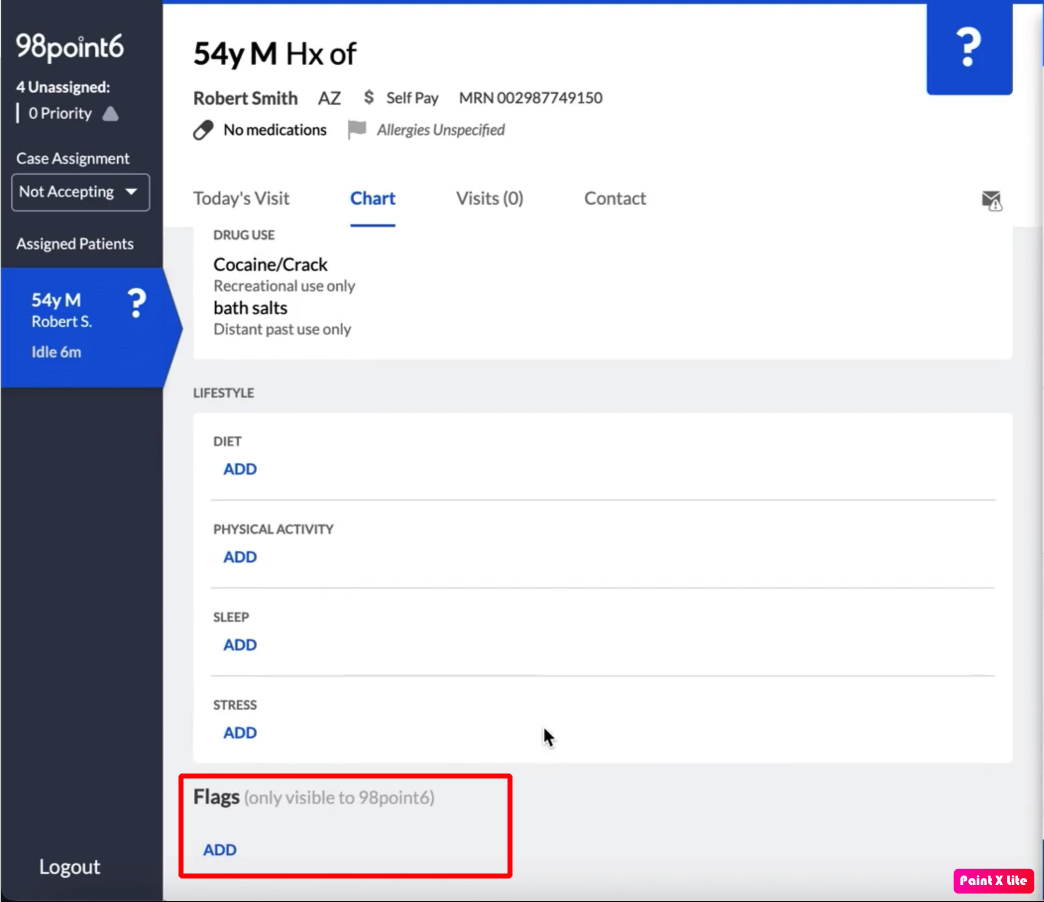Chart - Behavioral Health
The Chart contains all of the patient’s medical information and is a useful tool for therapists to learn more about the patient prior to the visit.
NOTE: It is recommended that updates should be made to the patient chart at the end of each visit.
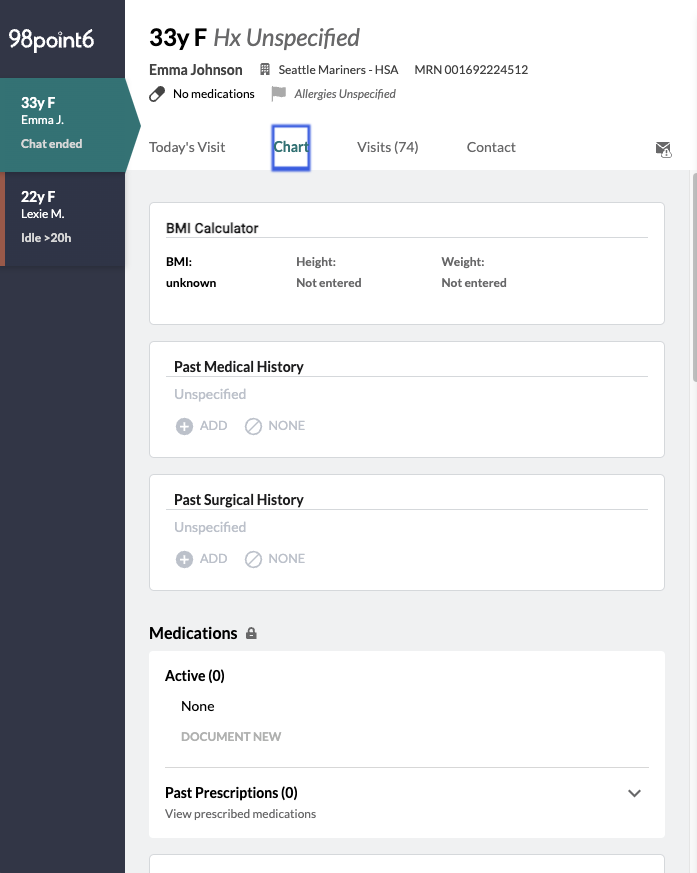
To view the patient chart:
Click to select a patient from left side of the screen, and then select the Chart tab.
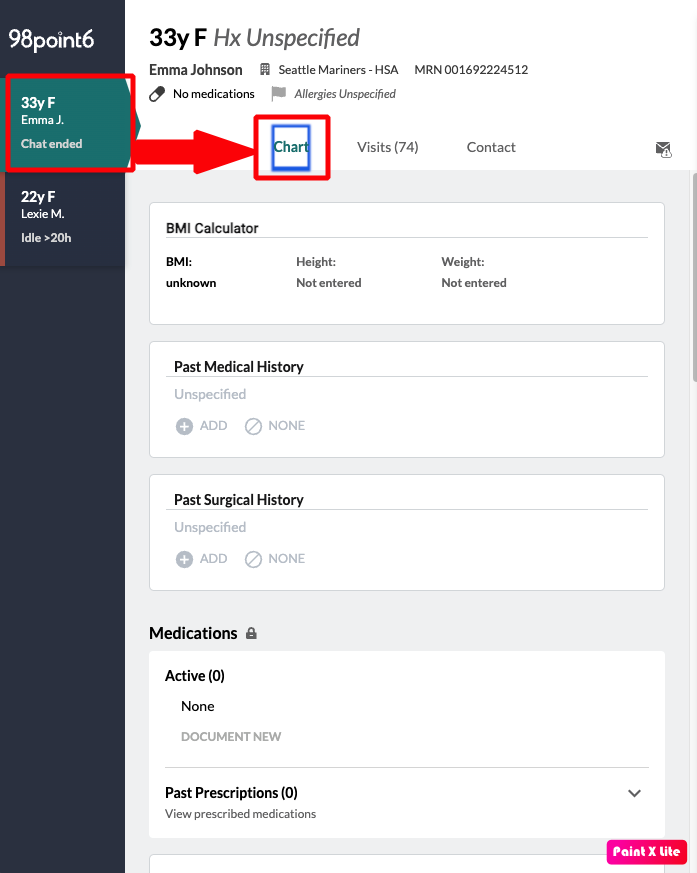
The patient chart displays allowing you to view health information and health history information about the patient.
BMI Calculator
The BMI Calculator contains the patient’s height and weight, as entered by the patient. The BMI automatically calculates based on this information.

Past Medical History
The Past Medical History section contains information about patient’s medical history.

Past Surgical History
Past Surgical History contains information about the patient’s past surgeries (if any).
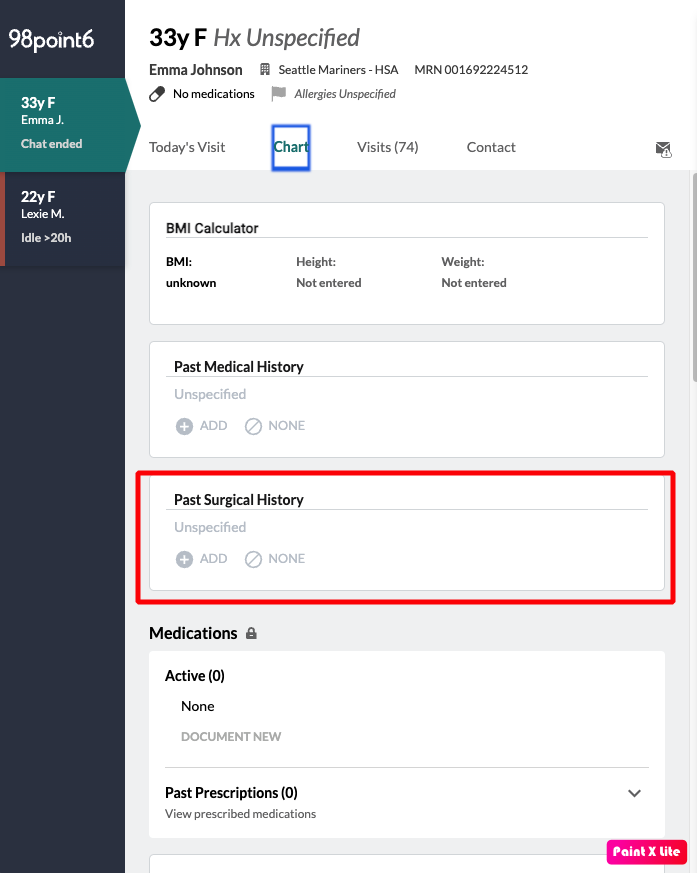
Medications
The Medications section displays medications the patient is currently taking, along with those taken in the past. Current medications also display at the top of the chart, within the patient information section.
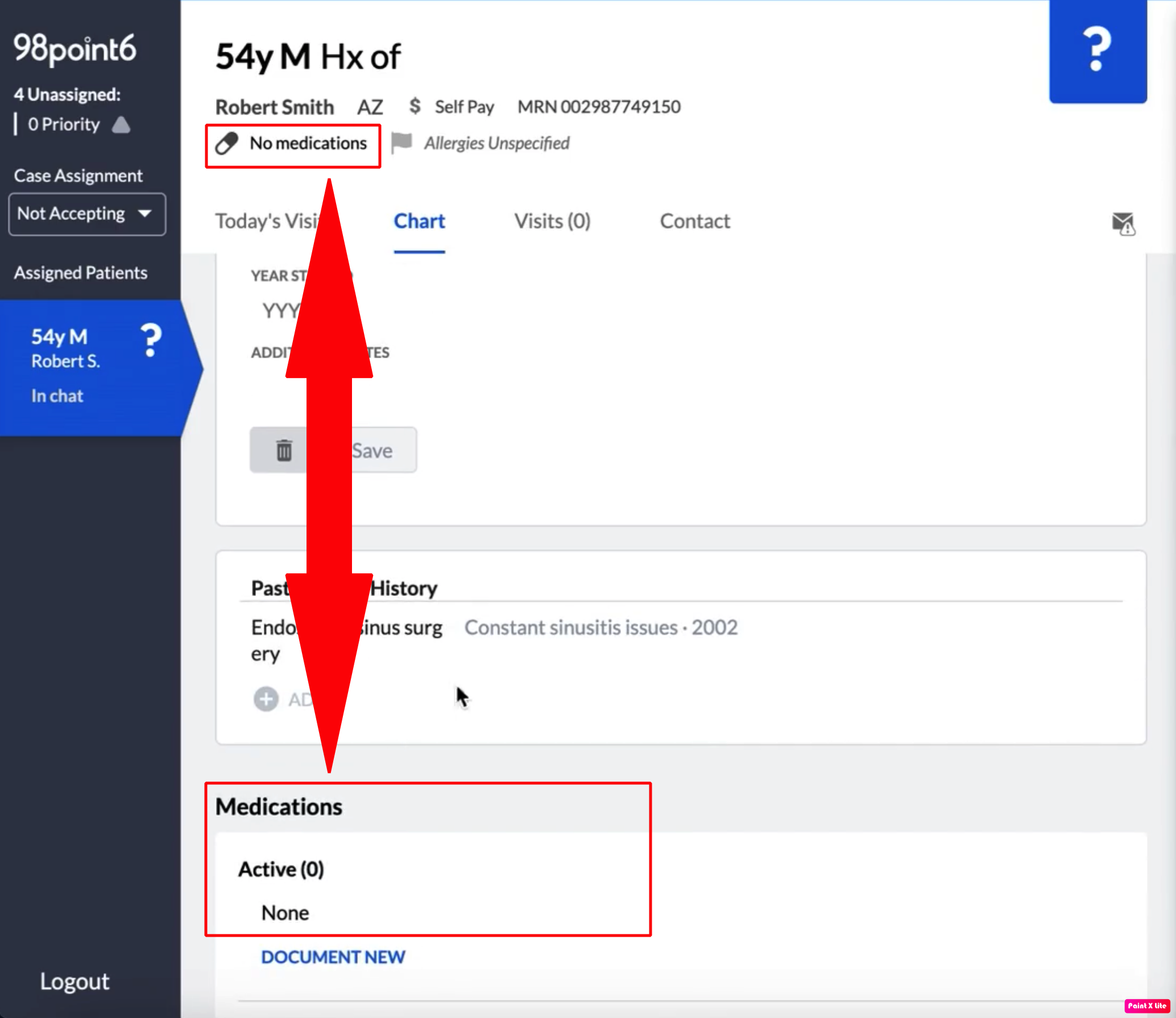
Medications automatically updates when clinicians prescribe medications during the patient visit.
Allergies
The Allergies section contains both environmental allergies, along with allergies to medications.
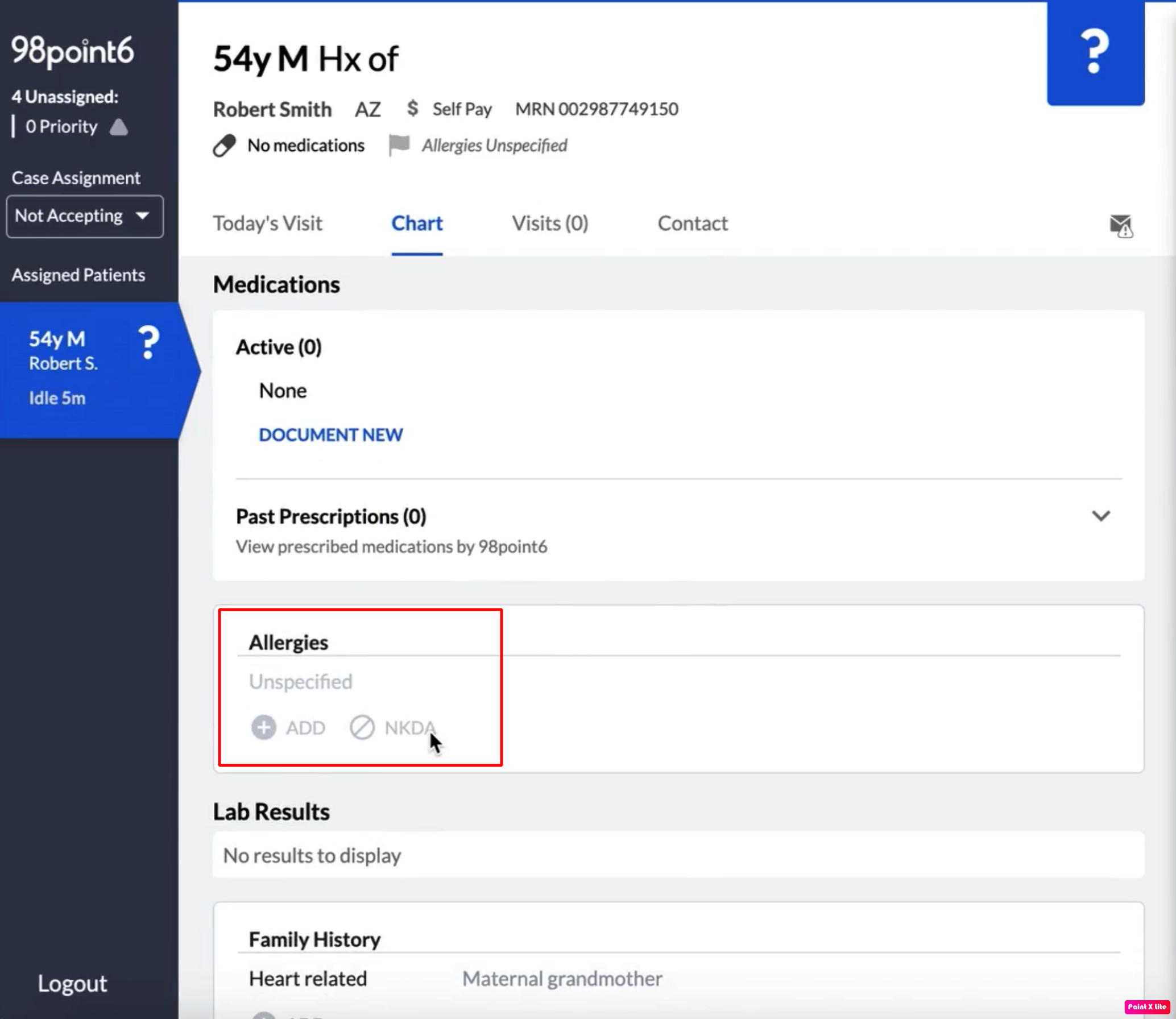
Lab Results
The Lab Results section contains the results of labs ordered during patient visits. This field does not require updates because it automatically updates when lab results are ready.
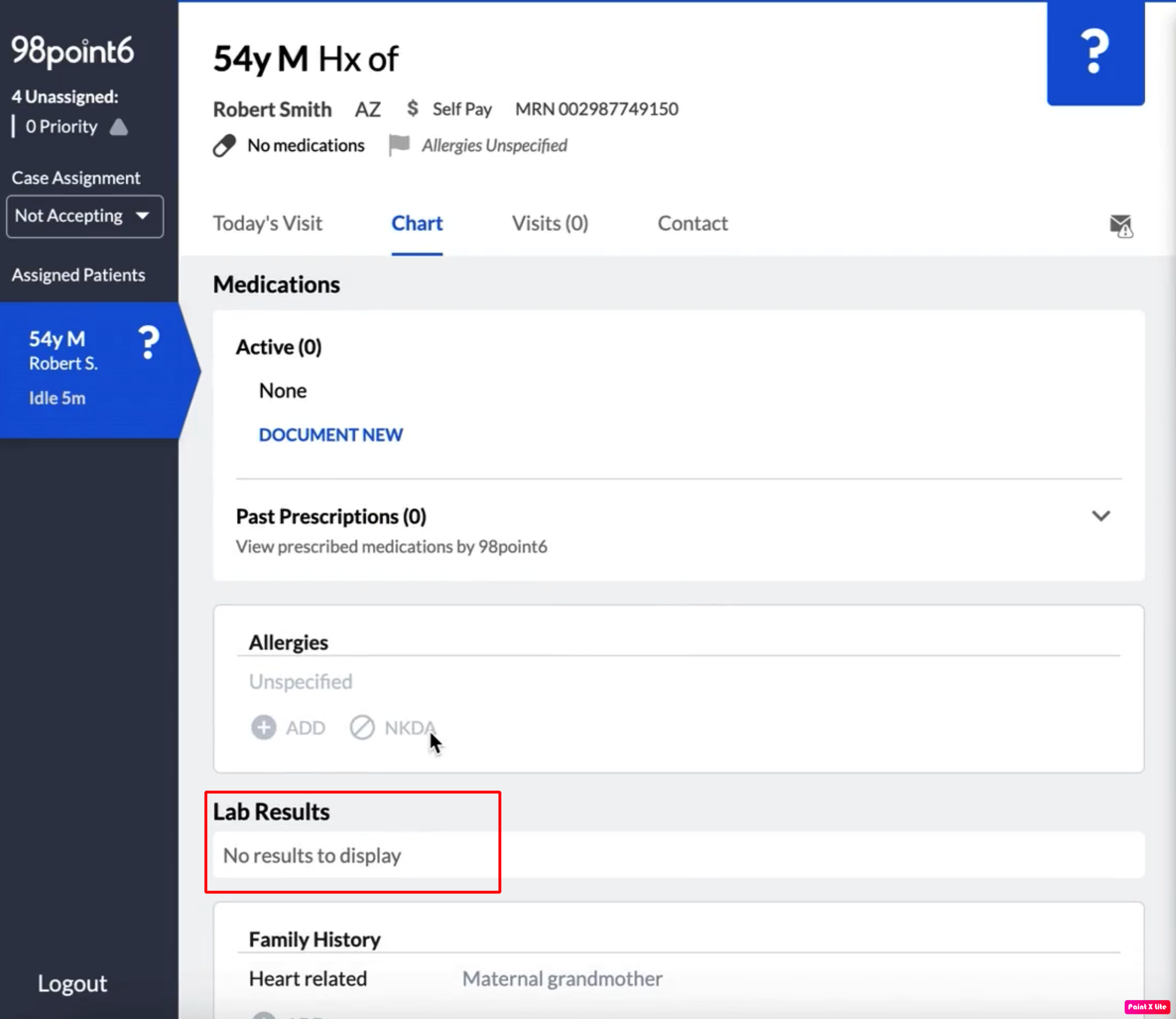
Family History
This section contains important Family History information, along with family members who may have had certain conditions.
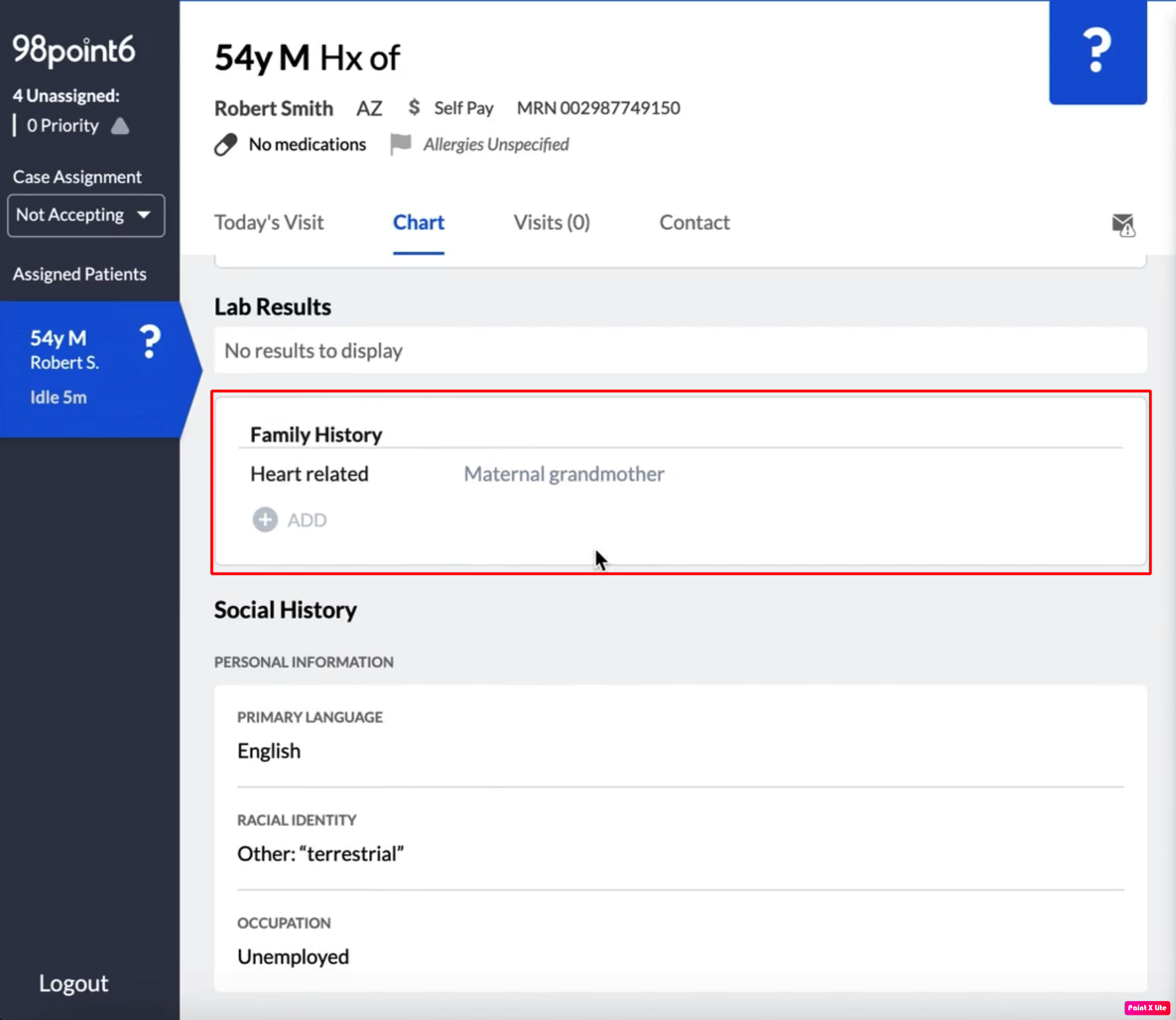
Social History
The Social History includes information the patient provided during their onboarding session, when registered their 98point6 account. Here, you’ll find information such as preferred language, race, occupation, and so forth.
The Social Support field within this section is a free text field, allowing clinicians to document a patient’s support system.

It is recommended to only change this information when asked to do so by the patient.
Substance Abuse
Substance Abuse allows clinicians to document the patient’s current, or past substance abuse.
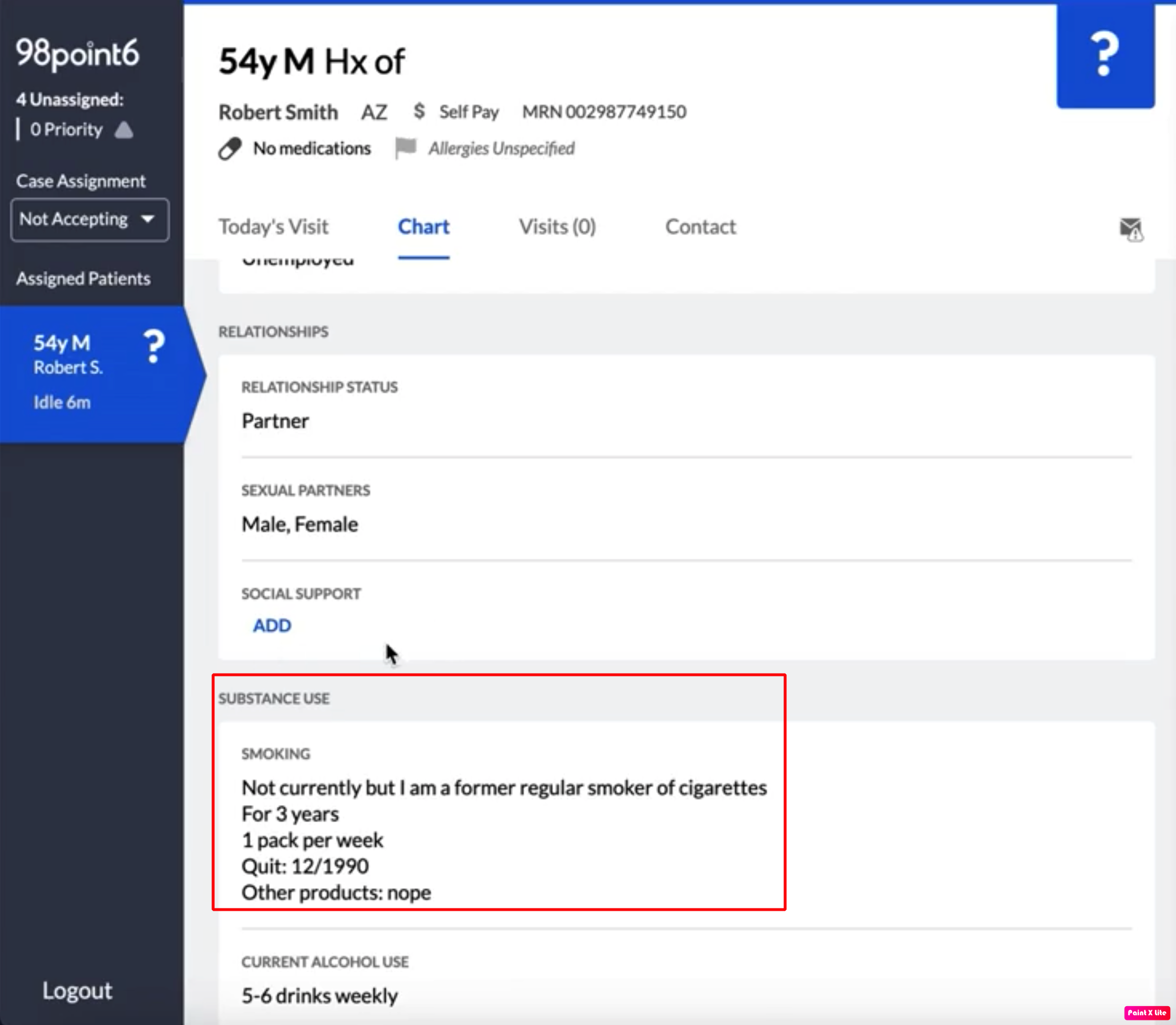
Lifestyle
This section allows the clinician to capture habits and other lifestyle information such as physical activity, diet, stress, and so forth.
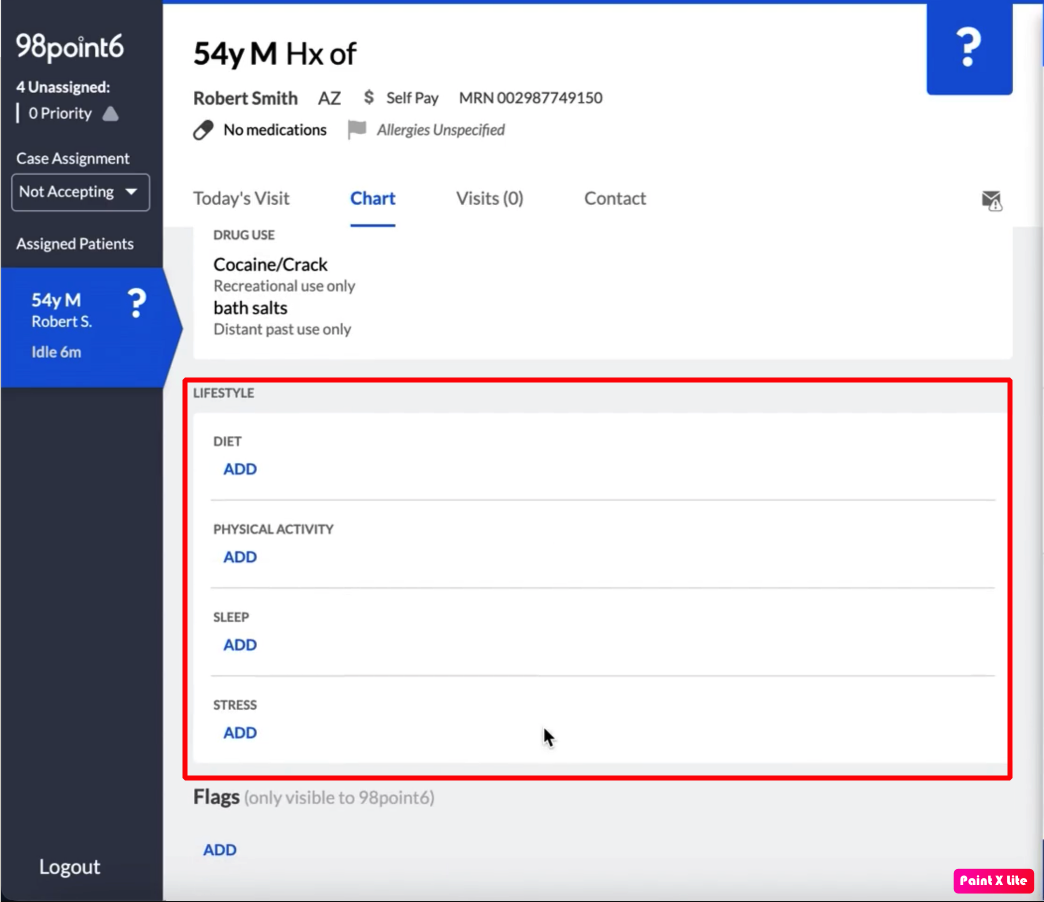
Clinicians are generally not expected to fill in this information (unless discussed during the patient visit), as it is usually completed by the coaching team when discussing lifestyle changes with the patient.
Flags
Flags contain useful information for clinicians prior to starting the visit. For instance, a flag might be present to indicate that labs are due.
